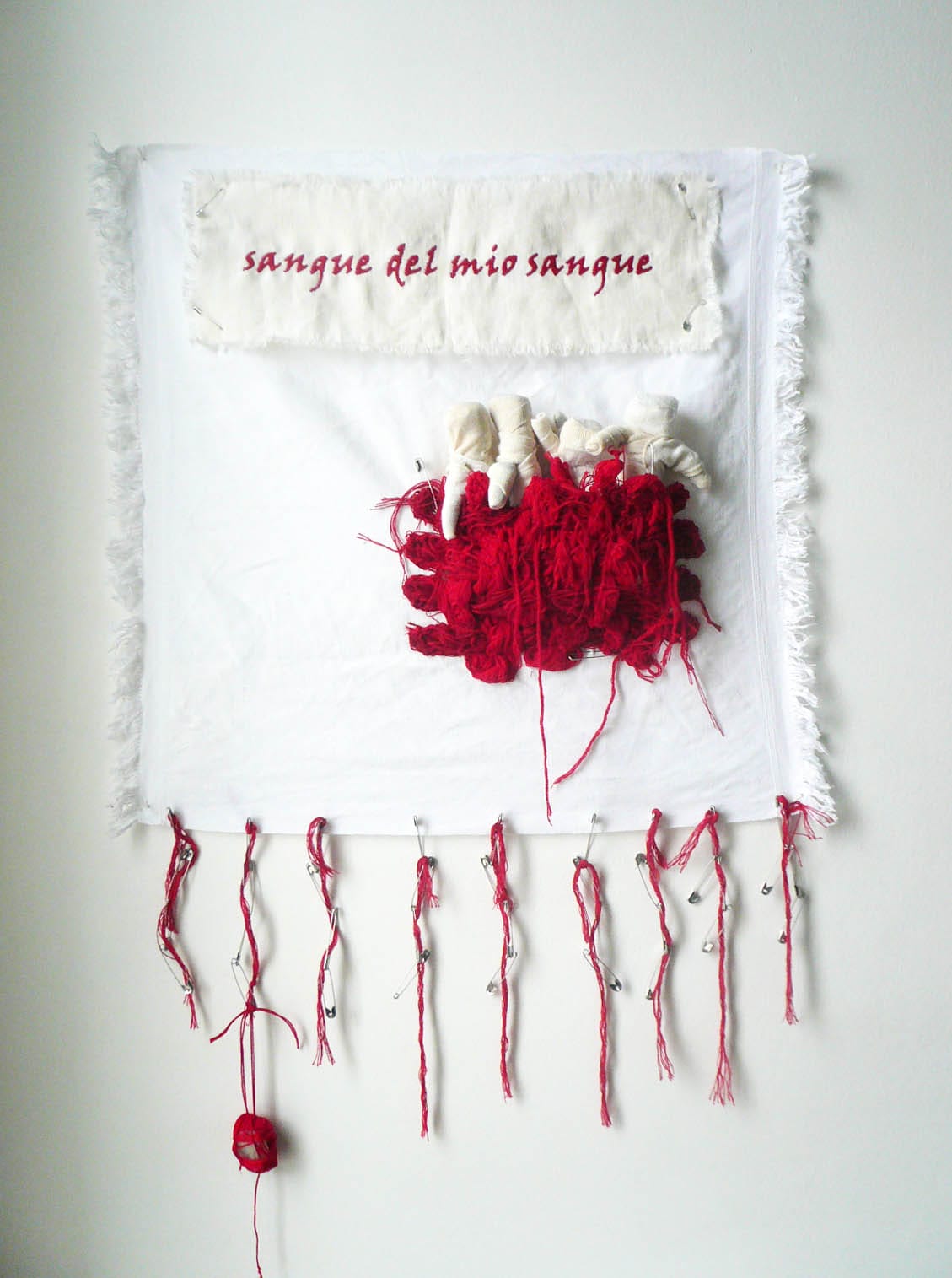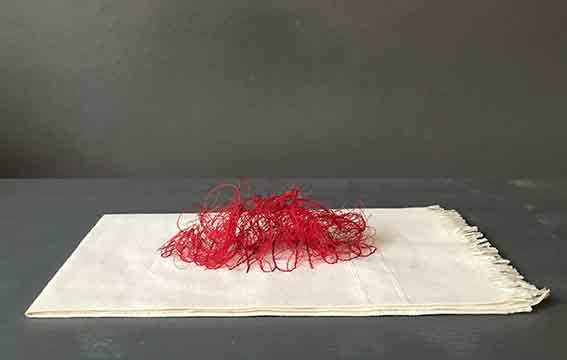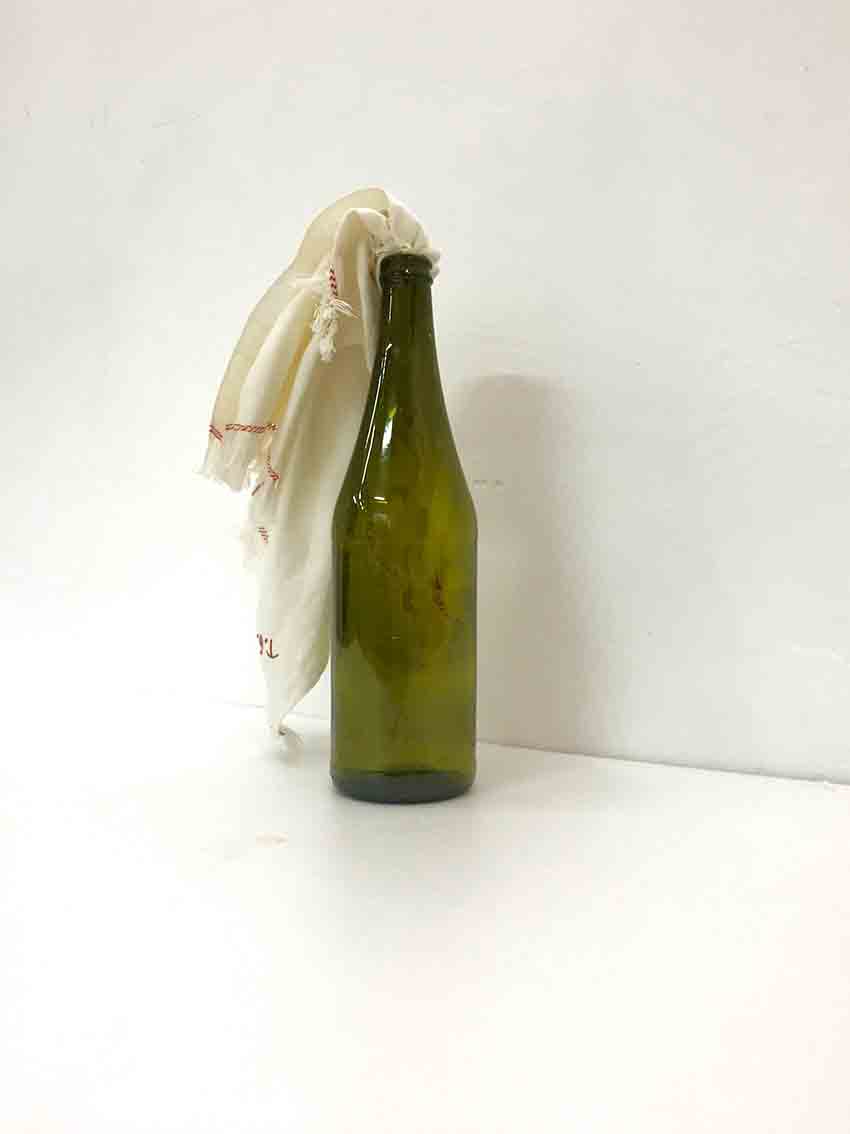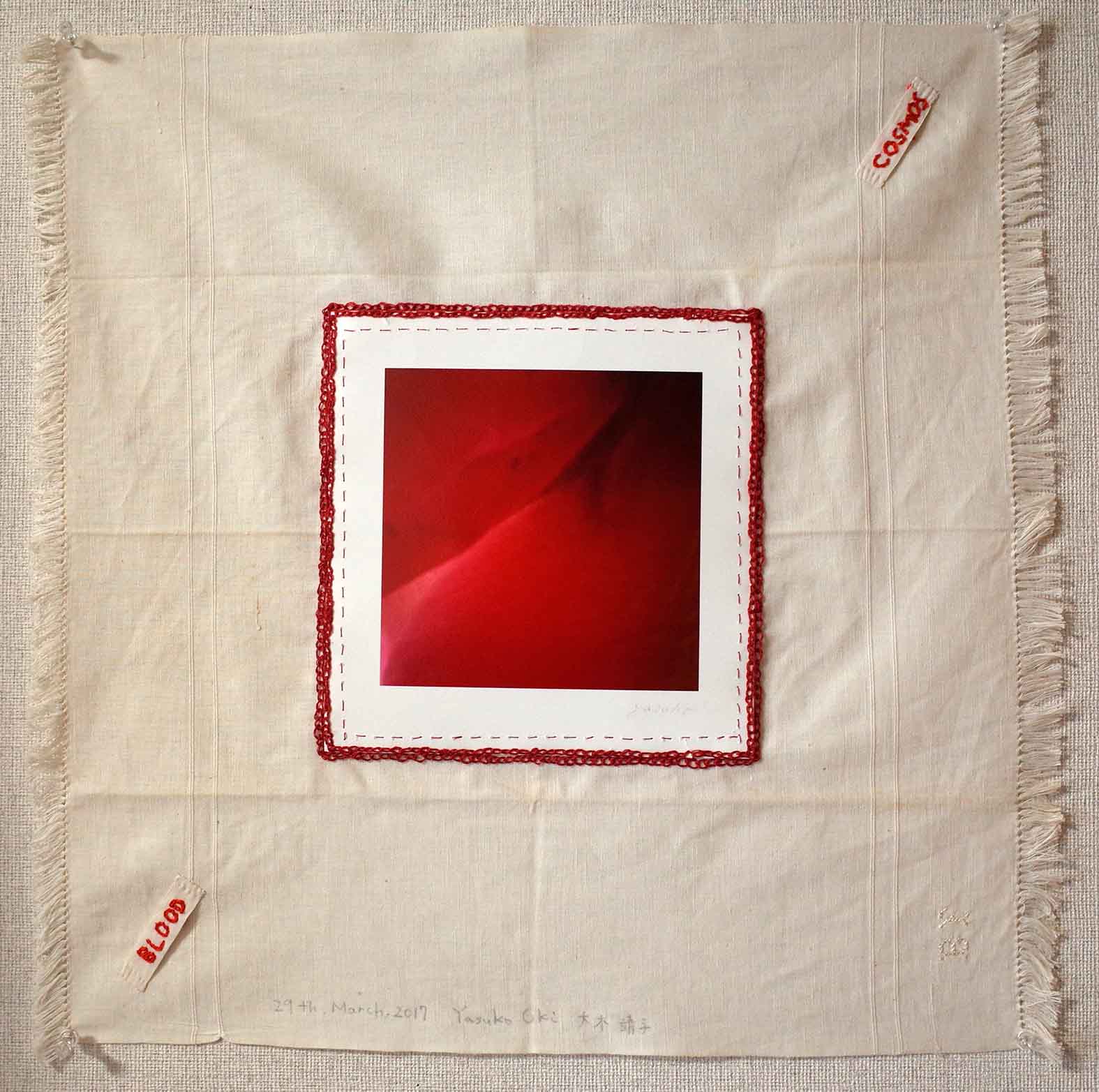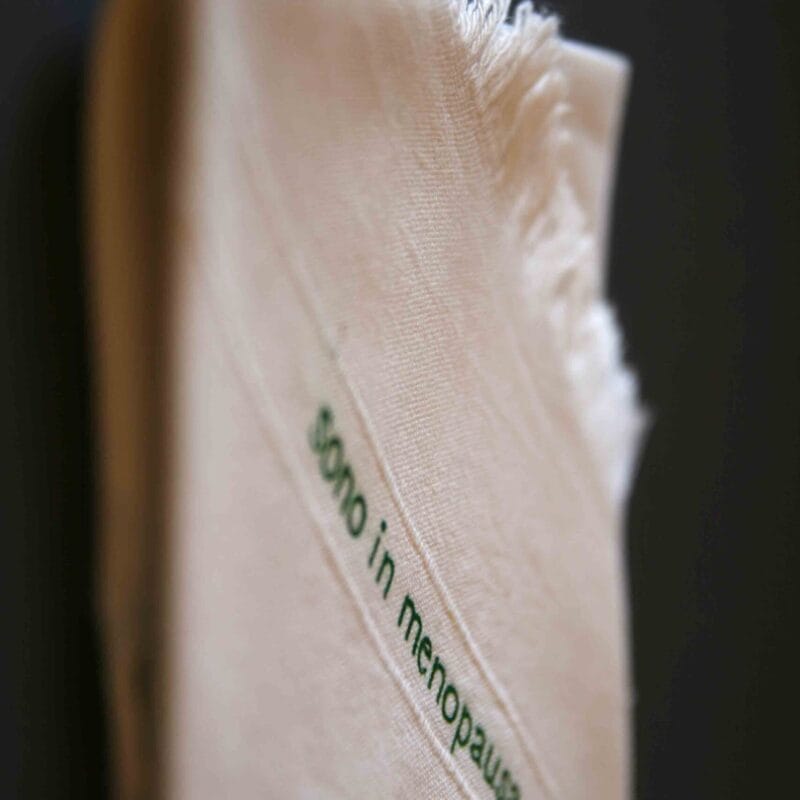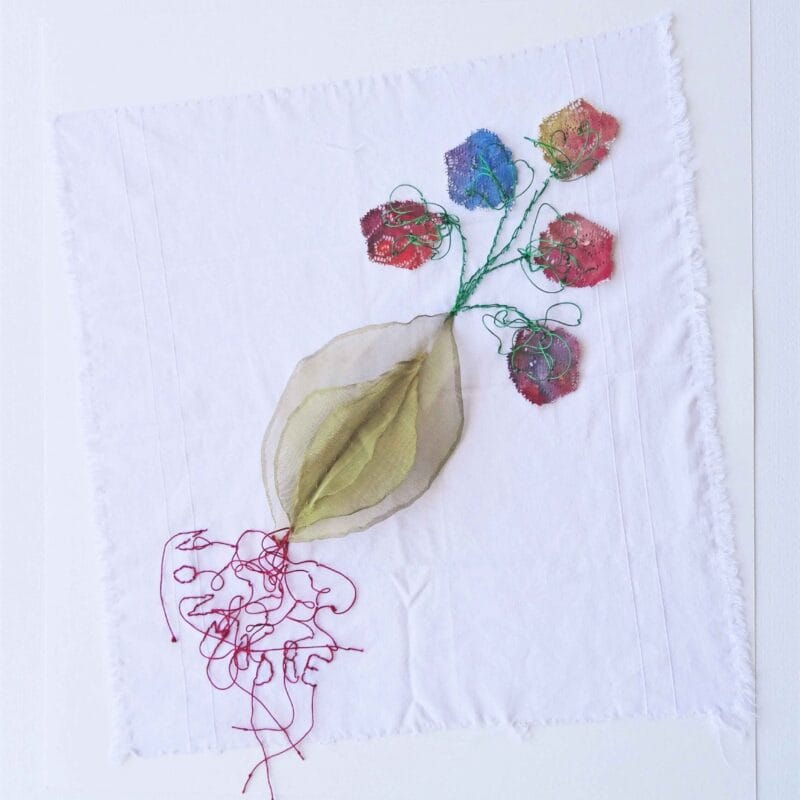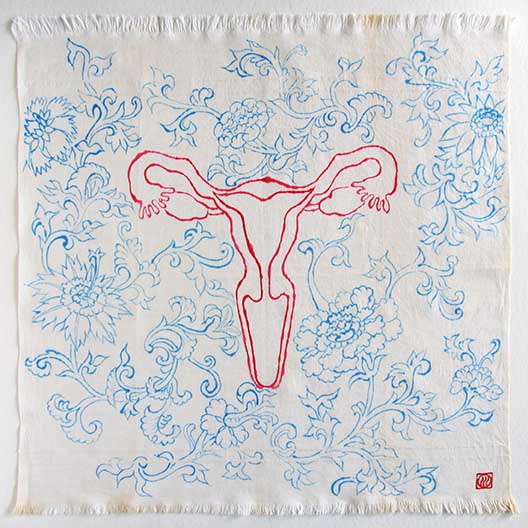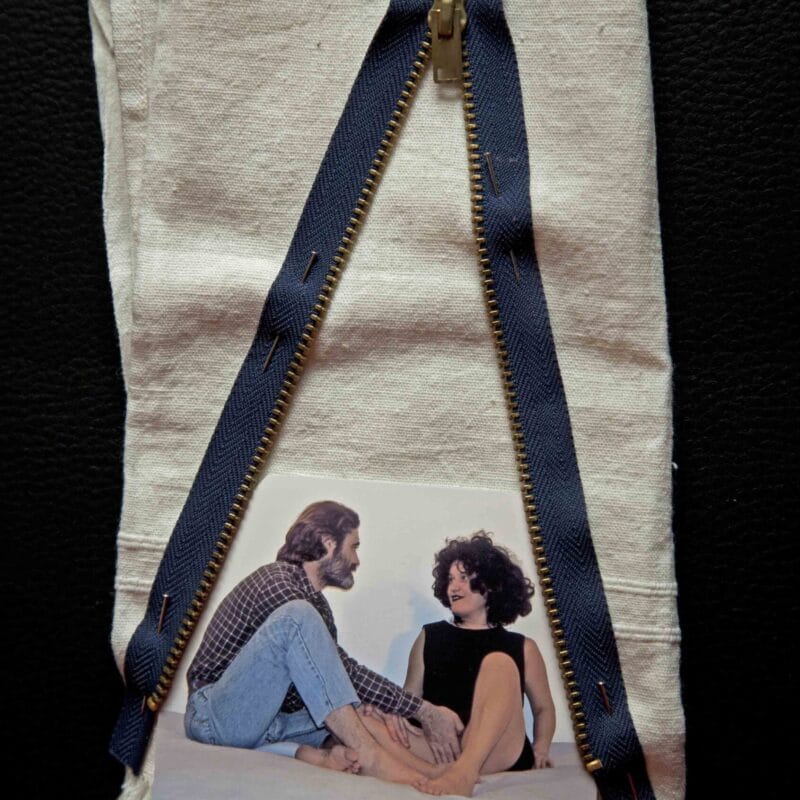THE BLOOD OF WOMEN. TRACES OF RED ON THE WHITE CLOTH
Translation by Marina Dlacic
All photographs are provided by the artists.
The blood of women. Traces of red on the white cloth is an artistic project born in 2014 from an idea of Manuela De Leonardis after finding in a market in the capital several pieces of light linen which, until the 1960s, were used as a sanitary towel ( panno-lino or cloth of linen) to buffer and absorb menstrual flow. Natural and physiological phenomenon that has always had significant effects on the lives of women of all generations, not only in physical, psychological and existential terms but also determining social behaviors conditioned by external factors linked to culture, tradition and – last but not least – to ignorance.
Lea Contestabile, “BLOOD of my BLOOD. Dedicated to my mother “, 2018, sanitary towel, embroidery, cotton thread, paper, hot glue, safety pins, 53×55 cm
The blood of women is, together with the medium of the diaper that each artist has received to transform it into a work of art, the common thread that unites the works of the artists who participate in this traveling exhibition, giving voice in a plurality of techniques and materials to as much plurality of themes, subtracting from the whisper and silence the many aspects of the feminine that still need an amplifier to be understood and known. Art therefore acts as such, increases the volume, expands the listening audience of the reflections of the feminine, which here is not a self-referential expression but a dialogue with the other, a confrontation with the external world and extraneous to the intimate and family dimension in which they have been relegated for centuries; it is the female point of view on the many instances of existence, of society, of history, of memory through works that transversally embrace the many cultures and the different generations to which the women who bear witness, tribute, narration belong here.
Carolle Bénitah, “J’ai honte”, 2018, diaper, embroidery, red thread, 15×26 cm
Women and artists who return a multifaceted and assertive reading of female reality: autobiographical works or works inspired by personal experience to tell the individual yet universal figure of phenomena but also and above all who know how to interpret and defeat the taboos that still today, in many parts of the world, envelop in the silence of rejection or marginalization many aspects of women’s lives (and not only) – birth, puberty, menstruation, menopause, sexuality, family ties, violence, femicide.
Silvia Giambrone, “Cheers!”, 2016, diaper, glass bottle, real size
The artists Ilaria Abbiento, Manal AlDowayan, Adele Angelone, Elizabeth Aro, Wafa Bahai, Alessandra Baldoni, Carolle Bénitah, Takoua Ben Mohamed, Saša Bezjak, Tomaso Binga, Rosina Byrne, Giovanna Caimmi, Primarosa Cesarini Sforza, Rupa Chordia Ciuffetta-Samdaria, Sara , Lea Contestabile, Karmen Corak, Mila Dau, Vlasta Delimar, Kristien De Neve, Maria Diana, Isabella Ducrot, Nilüfer Ergin, Cristiana Fasano, Maimuna Feroze-Nana, Simona Filippini, Emita Frigato, Pilar, Barbara and Stella Marina Gallas, Silvia Giambrone , Felicity Griffin Clark, Maïmouna Guerresi, Susan Harbage Page, Sasha Huber, Susan Kammerer, Fariba Karimi, Eglė Kuckaitė, Hanako Kumazawa, Silvia Levenson, Wenwen (Vivienne) Liu, Lôw (Estabrak Al Ansari, Raiya Al Rawahi, Tara Alither , Barbara Luisi, Anja Luithle, Victoria Manganiello, Florencia Martinez, Patrizia Molinari, Elly Nagaoka, Ana Maria Negară, Yasuko Oki, Novella Oliana, Sonya Orfalian, Lina Pallotta, Sara Palmieri, Chiara Pellegrin, Sofia Rocchetti, Elisa Ro ggio, Anna Romanello, Paola Romoli Venturi, Virginia Ryan, Cinzia Sarto, Ivana Spinelli, Silvia Stucky, Ketty Tagliatti, Judy Tuwaletstiwa, Laura VdB Facchini, Maria Angeles Vila, Nicole Voltan, Ruchika Wason Singh and Deborah Willis accepted the invitation – and the challenge – to participate in this choral project by transforming these small pieces of linen into the mouthpiece of reflections that go beyond the gender sphere.
Each artist accompanied the work with a written text and in January 2019, with the support of the Pasquale Battista Foundation and its director Annalisa Zito, the book “Il sangue delle donne. Tracce di rosso sul panno bianco. The Blood of Women. Traces of red on a white cloth “(Italian / English). The volume contains the critical text by Manuela De Leonardis, the work “Ciclo” by Mirella Bentivoglio, the images of the 68 works of the artists with their texts and the contributions of personalities from different fields, from ethnology to psychoanalysis.
Tomaso Binga, “San guè”, 2016, diaper, print, safety pins, 70×66 cm
The exhibition, curated by Manuela De Leonardis, with the coordination of Dino Lorusso and Ninni Castrovilli, was held in various locations in Italy and Croatia and other events are scheduled for 2021, compatibly with the restrictions due to COVID19.

